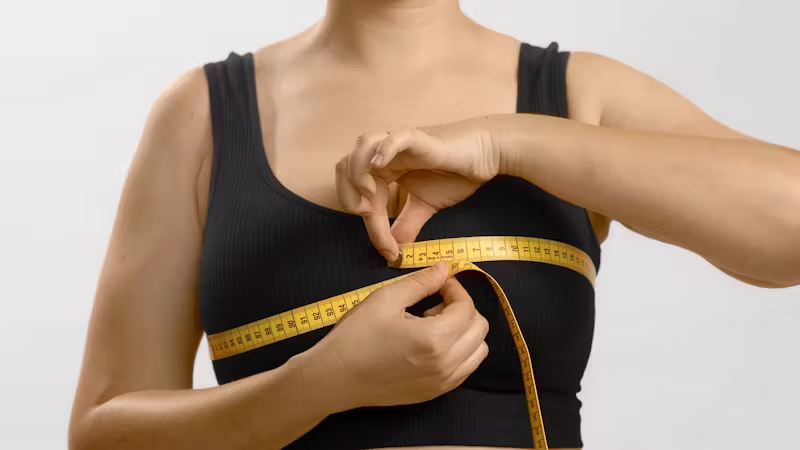
The first week feels like pressure, not pain
Right after surgery, the body reacts slowly. Breasts feel swollen, firm, unfamiliar. There’s tightness more than pain. Movement becomes a decision. You sleep propped up, avoiding pressure. Painkillers help, but they also dull everything else. Rest becomes a full-time job.
You wear a surgical bra all day. Maybe drains. Maybe stitches you’re told not to touch. You look in the mirror and feel unsure. That’s normal. Nothing looks settled. Nothing feels settled. But it’s not about how it looks yet.
This first week is about stillness, not results.
By week two, you start to move with more confidence
Soreness lingers, but it’s different now. You don’t flinch every time you stand. You start walking more. Maybe even showering on your own. Bruising shifts color. Swelling feels less sharp. Some stitches dissolve. Others are removed.
The shape isn’t right yet. One side might sit higher. Scars feel raised. But there’s progress. Clothes fit better, even loose ones. The surgical bra still stays on. The mirror feels kinder.
It’s not healed. But it’s healing.
Week three isn’t dramatic—but it matters
You stop thinking about every move. You lift light things. Maybe return to work. Long hours still wear you out. But your body doesn’t feel like an open wound anymore. It starts belonging to you again.
Swelling softens. Incisions dry out. You touch the skin around the scars and feel less fear. It’s sensitive, but not fragile. You breathe deeper. You sleep more easily.
Most people around you don’t notice the shift. But you do.
At week four, a rhythm returns
You learn when to rest and when to push. Some days feel easy. Some feel like a setback. The swelling changes daily. The bra feels less like armor, more like habit.
You still can’t exercise. Still can’t stretch. Still can’t sleep on your side. But you walk faster. Stand longer. Laugh without discomfort. That matters.
The shape is still adjusting—but so are you.
By six weeks, things feel lighter—literally and mentally
Your surgeon may lift some restrictions. Maybe light activity. Maybe soft bras. Maybe full showers. Your posture shifts again. You carry yourself differently.
The scars are darker than you’d like. But smaller than you feared. You still wear compression. Still check in with your doctor. But you also start forgetting you had surgery every time you move.
That’s progress, even if it’s quiet.
At three months, the changes feel real
You don’t overthink each outfit. Or each movement. Your chest feels part of you now—not something to manage. You might return to gentle workouts. Stretch your arms fully. Reach without hesitation.
Scars begin to fade. Still pink. Still sensitive. But flatter. Softer. The shape evens out. Skin relaxes. Numbness may remain—but sensation slowly returns.
People notice, but you stop needing them to.
Six months in, it becomes your new normal
You can sleep how you like. You can wear anything. You can carry bags, raise arms, forget what heaviness felt like. There’s still awareness—but no more worry.
You may massage your scars. Check your skin. Follow your routine. But it’s maintenance, not management. The result isn’t just physical. It’s how you move. How you breathe. How you exist without adjusting everything.
Comfort becomes effortless.
At one year, you stop counting weeks
The body holds its shape. The scars settle into skin. You know where they are—but you don’t see them all the time. Your breasts feel natural—not new. You dress faster. Walk straighter. Sleep better.
There’s pride. Relief. Sometimes, disbelief. Because recovery wasn’t a straight line. But it brought you here. Not back to before—but somewhere better.
And now, you just live in it.
